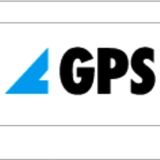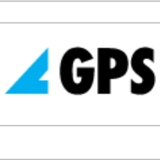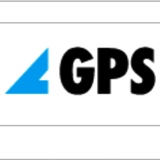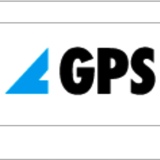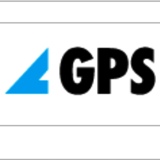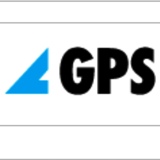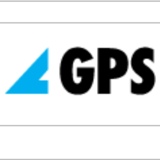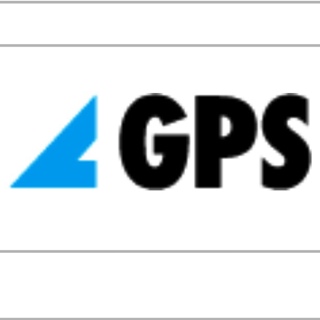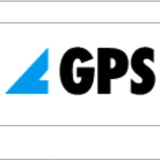Information
-
Audit reference number (automatic)
-
Description of area/cell/process being audited
-
Site and Department
-
Scope of the audit (See audit plan and add to this as necessary)
-
Conducted by
-
Conducted on
-
Are there actions which require close out?
-
Revisit date (if there are actions to close out)
General Help
-
Take photographs or sketch to help clarify any issues you identify as required in each section. Don't forget to record the good points as well.
You must select compliance level from the options:
OK = Satisfactory (It is working effectively and reliably)
NCR = Non-Conforming (It is NOT working effectively)
OBS = Observation (there may be a slight deviation but generally is working well)
OFI = Opportunity for Improvement (ideas that could make it better than it is)
N/A = Not Applicable (this question does not apply to the area being audited) -
Please ensure you write down, or photograph: serial numbers, reference numbers, order numbers etc to ensure that the audit is repeatable
-
In order to allow typing information against a question, tap on the text of the question to open the text input box
People Issues
-
OK = Satisfactory (It is working effectively and reliably)
NCR = Non-Conforming (It is NOT working effectively)
OBS = Observation (there may be a slight deviation but generally is working well)
OFI = Opportunity for Improvement (ideas that could make it better than it is)
N/A = Not Applicable (this question does not apply to the area being audited
1. People issues (communication)
-
Guidance:
Look for evidence of: team talks, noticeboards, (check information is up to date and relevant), KPI graphs, departmental performance figures, information regarding the performance of the quality management system, environmental management system, or health and safety management system (such as accidents, scrap, complaints, OTIF, etc) -
Is there evidence of communication within the department? (Describe/photograph)
-
Action(s) required:
you must also identify who is responsible for the action(s)
Action(s)
-
Action
-
Responsibility:
-
Has action been taken to address the action, and to a satisfactory level?
-
Verified by
2. People Issues (competence and capability)
-
Guidance:
Look for examples of Young persons (Under 18 years of age) and pregnant workers (health and safety concerns). These two groups are especially at risk. Young persons because of inexperience and immaturity and pregnancy can affect ability to carry out certain tasks safely (for example manual handling)
Look for evidence of employees having undergone induction training, quality, environmental and health and safety awareness training, and training for the specific tasks they are performing.
Look especially for tasks which require specific skills or qualification such as driving fork lift trucks, changing grinding wheels, measuring or testing product etc.
Competency can be based on education, training, skills, and/or experience. Look for evidence of records of training - are they suitable and sufficient? Are there issues with understanding (for example language barriers). Is there evidence of stress or violent behaviour? is there evidence of unsafe or environmentally unsound behaviour or practice?
Are any of the workers disabled or otherwise disadvantaged in performing the task(s)?
Is there evidence of lack of competence or capability affecting product quality or customer service? Is there evidence of ongoing performance appraisal on persons within the department or area being audited? Is there adequate supervision? -
Are personnel performing work which could impact on the customer, service, health and safety, or the environment, competent and capable?
-
Action(s) required:
you must also identify who is responsible for the action(s)
Action(s)
-
Action
-
Responsibility:
-
Has action been taken to address the action, and to a satisfactory level?
-
Verified by
3. People Issues (responsibility and authority)
-
Guidance:
Is it clear what each person's responsibility and authority level is? (Is there evidence of decisions not being made or tasks not been done, because no one is quite sure whose job it is?).
Are the roles clearly defined and documented within a job profile, and if not, how are people informed about their responsibilities and authority levels? Are budgetary levels and responsibilities clear? -
Is responsibility and authority clearly defined?
-
Action(s) required:
you must also identify who is responsible for the action(s)
Action(s)
-
Action
-
Responsibility:
-
Has action been taken to address the action, and to a satisfactory level?
-
Verified by
Material Issues
-
OK = Satisfactory (It is working effectively and reliably)
NCR = Non-Conforming (It is NOT working effectively)
OBS = Observation (there may be a slight deviation but generally is working well)
OFI = Opportunity for Improvement (ideas that could make it better than it is)
N/A = Not Applicable (this question does not apply to the area being audited
1. Materials (Hazards)
-
Guidance:
Look for Toxic, Irritant, Sensitising, Corrosive or Carcinogenic chemicals that are in use (including the use of local exhaust ventilation). Check that chemicals are properly labelled (or otherwise identified so it is clear what the contents are and what the corresponding hazards are)
Check that they are listed in the COSHH register, and are used in a safe manner (using the PPE that is recommended).
Check for signs of use of water which might be stale or contain bacteria (such as cooling water) and for signs of water spray in air (Legionella risk)
Look for environmental hazards also, for example use of oils, chemicals hazardous to aquatic life and materials that can cause dust or fume with the resultant risk of explosion, fire or problems with inhalation. -
Are all chemicals in use on the COSHH register and suitably identified controlled to minimise H&S or Environmetal issues? Describe/photograph)
-
Action(s) required:
you must also identify who is responsible for the action(s)
Action(s)
-
Action
-
Responsibility:
-
Has action been taken to address the action, and to a satisfactory level?
-
Verified by
2. Materials (Safe Storage)
-
Guidance:
Check all material(s) storage. Is it safe (not exceeding safe working loads for shelving, and safely and suitably stacked - for example stability and load distribution)
Is storage free from spills and leaks (for example granules on the floor)?
Is it secondary contained as needed?
Is packing in good condition (damaged boxes etc)?
Is storage such that it prevents damage or deterioration to the items concerned?
Does the material in use have a limited shelf life such that it could deteriorate and not function properly (for example seals/gaskets, cement etc) ? -
Are all materials stored in a safe manner? (Describe/photograph)
-
Action(s) required:
you must also identify who is responsible for the action(s)
Action(s)
-
Action
-
Responsibility:
-
Has action been taken to address the action, and to a satisfactory level?
-
Verified by
Equipment issues
-
OK = Satisfactory (It is working effectively and reliably)
NCR = Non-Conforming (It is NOT working effectively)
OBS = Observation (there may be a slight deviation but generally is working well)
OFI = Opportunity for Improvement (ideas that could make it better than it is)
N/A = Not Applicable (this question does not apply to the area being audited
1. Equipment (Accuracy and capability)
-
Guidance:
Is equipment and machinery in use suitable for its intended purpose and calibrated to ensure accuracy as necessary (if used to validate product quality, or measure environmental emissions or levels, or measure health and safety performance)?
Is equipment's performance consistently repeatable to ensure reliability of the process?
For example test tanks, and measurement equipment such as meters and verniers etc -
Is equipment and machinery in use; suitable, calibrated and capable? (Describe/photograph)
-
Action(s) required:
you must also identify who is responsible for the action(s)
Action(s)
-
Action
-
Responsibility:
-
Has action been taken to address the action, and to a satisfactory level?
-
Verified by
2. Equipment (Safety and effectiveness)
-
Guidance:
Has equipment and machinery that is in use been assessed for PUWER (Provision and use of work equipment regulations) compliance?
Has equipment or machinery been tested as necessary (for example PAT testing on portable appliances)?
Has equipment undergone appropriate statutory examinations if necessary (for example lifting equipment such as cranes, eyebolts, slings etc and they are appropriately marked or colour coded, forklift trucks, fixed electrical panels, moulding machines etc)?
Is all equipment or machinery in use suitably guarded, (with the need to use a tool to remove that guard), to prevent access to the dangerous parts of machinery?
Are all electrical cabinets and other high-voltage sources locked to prevent unauthorised access?
Any sign of unsafe equipment?
Look for examples where equipment or machinery has deteriorated due to lack of maintenance or attention, for example, missing or damaged guards, damaged casings, or cables, secondary containment full of rainwater, deterioration of bunds etc.
Look for examples where such deterioration could result in the efficiency or the capability of the equipment or machinery being compromised -
Is equipment and machinery in use safe? (Describe/photograph)
-
Action(s) required:
you must also identify who is responsible for the action(s)
Action(s)
-
Action
-
Responsibility:
-
Has action been taken to address the action, and to a satisfactory level?
-
Verified by
3. Equipment (Training and authorisation)
-
Guidance:
Are personnel using equipment suitably trained or authorised to use such equipment (for example forklift trucks, ladders, changing grinding wheels etc)?
Check personnel are capable of using things like test and measuring equipment correctly
Do records demonstrate that personal have been trained to operate the process or equipment for the reasons of quality, environmental implications and health and safety implications -
Is all equipment and machinery used by suitably trained and authorised personnel? Describe/photograph)
-
Action(s) required:
you must also identify who is responsible for the action(s)
Action(s)
-
Action
-
Responsibility:
-
Has action been taken to address the action, and to a satisfactory level?
-
Verified by
Environment issues
-
OK = Satisfactory (It is working effectively and reliably)
NCR = Non-Conforming (It is NOT working effectively)
OBS = Observation (there may be a slight deviation but generally is working well)
OFI = Opportunity for Improvement (ideas that could make it better than it is)
N/A = Not Applicable (this question does not apply to the area being audited
1. Environment (Infrastructure of the building and environmental conditions)
-
Guidance:
Is there evidence of unsafe structural elements of the building (e.g. walls, doors, windows, floor etc)? For example, is the floor level and free from damage, obstruction, or slip/trip hazards.
Are the walls/windows/doorframes, secure and free from elements which could fall off or fail to operate?
Look for areas which could potentially be asbestos, look at the condition. If in doubt, refer to the asbestos survey information. Typically asbestos can be used to lag pipework, or cover pipework but it can also be used for the fabric of the building.
If you believe there is asbestos in the vicinity which potentially is damaged, you should immediately report this to the maintenance supervisor.
Is the in process, or storage temperature, humidity, or other environmental conditions such that it prevents poor quality or deterioration of quality? (For example rusting, moisture condensation etc) -
Are there issues with the building infrastructure or environmental conditions? Describe/photograph)
-
Action(s) required:
you must also identify who is responsible for the action(s)
Action(s)
-
Action
-
Responsibility:
-
Has action been taken to address the action, and to a satisfactory level?
-
Verified by
2. Environment (access and egress and ergonomics)
-
Guidance:
Is there free access and egress to the area being audited? Are fire exits clear? Are there constraints to carrying out tasks due to space or ergonomics of the process? -
Is there sufficient access and egress to the work areas? Are there issues with the ergonomics in the work area?(Describe/photograph)
-
Action(s) required:
you must also identify who is responsible for the action(s)
Action(s)
-
Action
-
Responsibility:
-
Has action been taken to address the action, and to a satisfactory level?
-
Verified by
3. Environment (waste, energy and emissions)
-
Guidance:
Are wastes from the process properly segregated and managed? Are recyclable wastes (cardboard, plastics, metal etc) and hazardous wastes (oil contaminated) for example, disposed of in the correct containers?
Are personnel clear on the correct disposal points?
Is equipment turned off when not in use?
Is there any evidence of emissions during the process? -
Are wastes, energy, and emissions properly managed? (Describe/photograph)
-
Action(s) required:
you must also identify who is responsible for the action(s)
Action(s)
-
Action
-
Responsibility:
-
Has action been taken to address the action, and to a satisfactory level?
-
Verified by
4. Environment (Storage/racking)
-
Guidance:
Is storage and racking suitable for the load and safe? (Check racking is marked clearly with the safe working load, is secure so it cannot topple over, and it is properly loaded) ?
Ensure that heavy and light items are distributed such that the risks of manual handling are minimised and the stability of the storage is maintained
Are legs of racking protected from damage?
Ensure that storage is properly stacked/located (i.e. Items are not likely to fall off shelves)
Check for unsuitable storage – for example wooden pallets used to support a load greater than their capacity or condition warrants. -
Is storage/racking suitably managed? (Describe/photograph)
-
Action(s) required:
you must also identify who is responsible for the action(s)
Action(s)
-
Action
-
Responsibility:
-
Has action been taken to address the action, and to a satisfactory level?
-
Verified by
5. Environment (Fire Hazard)
-
Guidance:
Is there any fire hazard in the area (for example: flammable chemicals in use, cardboard/wood or other flammable materials stored in such a way that they may cause of fire - such as against a hot surface)?
Is there any source of ignition in the area (such as welding, brazing or heaters)?
Is the evidence of blocked cooling systems or ventilation on equipment?
Has a fire risk assessment been conducted in the area/department? -
Is there any risk of fire? (Describe/photograph)
-
Action(s) required:
you must also identify who is responsible for the action(s)
Action(s)
-
Action
-
Responsibility:
-
Has action been taken to address the action, and to a satisfactory level?
-
Verified by
Process Issues
-
OK = Satisfactory (It is working effectively and reliably)
NCR = Non-Conforming (It is NOT working effectively)
OBS = Observation (there may be a slight deviation but generally is working well)
OFI = Opportunity for Improvement (ideas that could make it better than it is)
N/A = Not Applicable (this question does not apply to the area being audited
1. Process (change management)
-
Guidance:
If there is change in the department, is the integrity of department procedures/processes maintained?
Look for tasks not been carried out because someone is no longer in the department, changes in priority because of change of leadership or responsibility, or new manufacturing processes/departmental processing being implemented with associated learning curves. -
Have there been any changes in the department/area being audited, and what impact has it had?(Describe/photograph)
-
Action(s) required:
you must also identify who is responsible for the action(s)
Action(s)
-
Action
-
Responsibility:
-
Has action been taken to address the action, and to a satisfactory level?
-
Verified by
2. Process (Monitoring measurement of product)
-
Guidance:
Are quality objectives and quality requirements defined for the product (for example quality plans, specifications, work instructions, quality alerts etc).
Are the required verification, validation, monitoring, measurement, inspection and test activities specific to the product carried out correctly? (This could also include visual checks, counts, confirmation of correct product on receipt etc)
Are there suitable records of such inspections and tests?
Is the person responsible for the checks clearly identified?
Check for appropriate testing (for example batch release measurement and testing, process verification testing, and, if necessary, type/approvals testing).
Check also for approval status (if for example, an approval mark is being added to a product, is there evidence of the product being approved?)
Are the results of measurements and tests suitably analysed looking for trends, and possibly indicating need for increased or decreased levels of activity? -
Are all relevant checks and measurements being undertaken and suitably analysed?(Describe/photograph)
-
Action(s) required:
you must also identify who is responsible for the action(s)
Action(s)
-
Action
-
Responsibility:
-
Has action been taken to address the action, and to a satisfactory level?
-
Verified by
3. Process (Legal/standards compliance)
-
Guidance:
Is the legislation/standard/specification to which the process must comply known, documented and available?
Is the legislation (if applicable) recorded within the legal register?
Consider hazardous processes, for example working in confined spaces, working at height, compliance to gas standards, transport requirements (hazardous chemicals for example)
Consider items such as guarding standards for process engineering, CEN standards, CSA, and other customer standards
Check specifically for the latest version of ISO 17025 ref CSA Approval -
Are applicable legislation or standards/specifications known? Are they available? Are they complied with?(Describe/photograph)
-
Action(s) required:
you must also identify who is responsible for the action(s)
Action(s)
-
Action
-
Responsibility:
-
Has action been taken to address the action, and to a satisfactory level?
-
Verified by
4. Process (documentation)
-
Guidance:
Is the process suitably documented via a process flow chart, work instruction, standard operation, specification sheet, quality, environmental or health and safety alert, booklet etc
If not documented, is the person performing the process suitably trained and/or experienced or supervised/monitored)?
Are all documents controlled in such a way that changes are identified, the document having an issue/revision number and date, and is it approved prior to issue?
Are documents legible and identifiable?
Are documents of external origin (such as customer drawings/specifications) suitably controlled? -
Is the process suitably documented and is the input/output clearly defined? (Describe/photograph)
-
Action(s) required:
you must also identify who is responsible for the action(s)
Action(s)
-
Action
-
Responsibility:
-
Has action been taken to address the action, and to a satisfactory level?
-
Verified by
5. Process (measurement)
-
Guidance:
What are the key process measures?
Are these displayed? (For example KPI's, departmental charts or graphs etc)? If so, is there improvement noted? if not what actions of being taken to improve things?
Is data generated and analysed looking for trends and the need for action to improve (for example number of near misses/accidents, test results, audit results, product measurement etc)
Look at test temperatures and pressures, test times, loads etc -
Are key processes measured, analysed, communicated and do they demonstrate appropriate improvement? (Describe/photograph)
-
Action(s) required:
you must also identify who is responsible for the action(s)
Action(s)
-
Action
-
Responsibility:
-
Has action been taken to address the action, and to a satisfactory level?
-
Verified by
6. Process (Risk assessment/aspects evaluation)
-
Guidance:
Are processes being undertaken risk assessed? (Examples of risk assessment are: general, task specific, manual handling, COSHH, PUWER, VDU, explosive atmosphere, young or pregnant workers, noise, fire etc (see section c23 in the health and safety management system)
Are there any outstanding actions from any such assessments?
Are the processes being undertaken covered by the environmental aspect evaluation? (See EM-01 – and the environmental aspects evaluation database - in the environmental management system) -
Are there suitable risk assessments? And are activities covered in environmental aspect evaluation? Are actions from such assessments dealt with? (Describe/photograph)
-
Action(s) required:
you must also identify who is responsible for the action(s)
Action(s)
-
Action
-
Responsibility:
-
Has action been taken to address the action, and to a satisfactory level?
-
Verified by
7. Process (Data and records)
-
Guidance:
Are all data and records, created as part of the process, suitably controlled? (Identified, backed up and suitably stored, with clearly documented disposal and retention periods)
The control of records should include electronic records as well as paper records.
Identify the records within the audit, and ensure that they are covered within the quality record process (P15 C)
Examine items such as approvals, and pvt tests -
Are all data records suitably controlled? (Describe/photograph)
-
Action(s) required:
you must also identify who is responsible for the action(s)
Action(s)
-
Action
-
Responsibility:
-
Has action been taken to address the action, and to a satisfactory level?
-
Verified by
8. Process (Non-conformance/rework/corrective/preventive action)
-
Guidance:
When the process goes wrong - and results in nonconformance - is action taken to resolve the issue in terms of documenting the problem, disposal action being taken (scrap, rework etc), containment action (making sure the customers not receive the problem), root cause analysis, and finally corrective action to resolve the root cause?
Additionally, is such failure analysed and improved upon, as well as applying preventive measures proactively?
Is there any evidence that materials in use do not conform to requirements and could affect quality (for example rusty, dimensionally non-compliant, visually non-compliant, deteriorating, etc). If so, are they clearly identified as nonconforming, with appropriate action identified? For example test or measuring equipment
For non-conforming testing or calibration does the procedure ensure:
Responsibility for dealing with the nonconformity is clearly defined?
Previous test results are validated as being correct? For example by repeating tests
If test reports are sent to customers are the customers notified?
Is appropriate corrective and preventive action taken to resolve the issue? -
Is there a robust process for dealing with non- conformance in the area being audited? (Describe/photograph)
-
Action(s) required:
you must also identify who is responsible for the action(s)
Action(s)
-
Action
-
Responsibility:
-
Has action been taken to address the action, and to a satisfactory level?
-
Verified by
9. Process (Identification and traceability)
-
Guidance:
During the process, is the status of the output of the process (whether it be product or documentation), clear?
Check materials in use (components, raw materials, products etc) are clearly identified in terms of their status and traceability and what they are for (e.g. Sample number, batch details, test parameters etc
Is it identifiable, such that it is clear what it is, and what needs to happen to it next?
This identification and traceability would include things such as; part numbers, batch numbers, works order numbers, material identification, sample numbers, test equipment number, station numbers, etc -
Are all products and items clearly identified and traceable? (Describe/photograph)
-
Action(s) required:
you must also identify who is responsible for the action(s)
Action(s)
-
Action
-
Responsibility:
-
Has action been taken to address the action, and to a satisfactory level?
-
Verified by
10. Process (PPE - Personal protective equipment)
-
Guidance:
Are all personnel wearing PPE which is required for the process (take note of signs and process requirements to identify whether people should be wearing hearing protection eye protection etc)?
Are people suitably trained and made aware of how to use the PPE? IS PPE suitable for its intended purpose (for example a dust mask being used for solvent use, cotton gloves for oil etc)? -
Is a PPE being worn when required? Is it suitable and being correctly used? (Describe/photograph)
-
Action(s) required:
you must also identify who is responsible for the action(s)
Action(s)
-
Action
-
Responsibility:
-
Has action been taken to address the action, and to a satisfactory level?
-
Verified by
11. Process (unsafe acts/conditions and accidents)
-
Guidance:
Have there been any health and safety, environmental, or quality concerns raised in the area in the last six months? Have there been any accidents in the area in the last six months?
Are there any outstanding actions from surveys and audits from external bodies (such as Owen David, SGS BSi, etc)?
If so, has action been taken to resolve the problems?
Has there been any notification to the HSE of any dangerous occurrence? -
Have there been accidents or near misses related to the process? If so what action(s) have been taken?(Describe/photograph)
-
Action(s) required:
you must also identify who is responsible for the action(s)
Action(s)
-
Action
-
Responsibility:
-
Has action been taken to address the action, and to a satisfactory level?
-
Verified by
12. Process (Emergency)
-
Guidance:
Is there evidence of emergency preparedness - spill kits, fire extinguishers, fire exits, knowledge of emergency plan, knowledge of what to do in the event of a fire, spill, accident etc?
Is all emergency equipment in operational condition (e.g. spill kits full, spill mats available, bunds not full of water, fire extinguishers not discharged etc)? -
Is there suitable emergency preparedness?(Describe/photograph)
-
Action(s) required:
you must also identify who is responsible for the action(s)
Action(s)
-
Action
-
Responsibility:
-
Has action been taken to address the action, and to a satisfactory level?
-
Verified by
13. Process (Outsourcing)
-
Guidance:
Are any processes or parts of processes outsourced? If so how are these controlled to ensure compliance to customer requirements, environmental compliance, health and safety compliance, etc)?
If these outsourced activities are carried out on our premises, is the contractor managed through permits to work etc (See C05).
How do we ensure that contractors working on our premises comply with environmental requirements (such a waste, discharges, emissions etc), or health and safety requirements (such as PUWER, working at height etc).
How do we confirm the quality of the outsourced operation?
How is the outsourced activity approved and controlled?
Ensure no CSA testing is outsourced other than to CSA approved labs -
Is anything outsourced? if so how is it controlled? (Describe/photograph)
-
Action(s) required:
you must also identify who is responsible for the action(s)
Action(s)
-
Action
-
Responsibility:
-
Has action been taken to address the action, and to a satisfactory level?
-
Verified by
Specific department or process questions
-
OK = Satisfactory (It is working effectively and reliably)
NCR = Non-Conforming (It is NOT working effectively)
OBS = Observation (there may be a slight deviation but generally is working well)
OFI = Opportunity for Improvement (ideas that could make it better than it is)
N/A = Not Applicable (this question does not apply to the area being audited
Process specific questions based on the process flows and ISO requirements
1. PVT testing
-
Guidance:
PVT testing is conducted at an agreed frequency and this is defined. -
Is all required PVT testing up to date and compliant with requirements?
-
Action(s) required:
you must also identify who is responsible for the action(s)
Action(s)
-
Action
-
Responsibility:
-
Has action been taken to address the action, and to a satisfactory level?
-
Verified by
2. Design and development planning
-
Guidance:
Ensure that it is clear what the various design stages are and what is to be done at each stage and who is responsible for it?
This would normally be documented within a project plan, but does not necessarily need to be so
It is important that interfaces between different functions and departments are properly managed to ensure clear communication and assignment of responsibility. This is especially true if the functions are inter company
-
Are design stages and review/validation stages defined along with appropriate responsibilities?
-
Action(s) required:
you must also identify who is responsible for the action(s)
Action(s)
-
Action
-
Responsibility:
-
Has action been taken to address the action, and to a satisfactory level?
-
Verified by
3. Design and development inputs
-
Guidance:
Inputs will include:
- Functional and performance requirements
- Statutory and regulatory requirements
- Where applicable, information derived from previous similar designs
- Other requirements such as market information, sales volumes, manufacturing process, customer specific requirements, environmental or health and safety implications as well as installation and use information. This should include things like measurement positions where they affect product performance regardless of regulatory specification -
Are all inputs clearly defined?
-
Action(s) required:
you must also identify who is responsible for the action(s)
Action(s)
-
Action
-
Responsibility:
-
Has action been taken to address the action, and to a satisfactory level?
-
Verified by
4. Design and development outputs
-
Guidance:
Design and development outputs should
- be in a form which allows confirmation that they meet the input requirements
- Provide sufficient information to enable purchasing, production of service provision to be undertaken (for example purchasing specifications for component parts, tolerances for production, marking and test requirements for production etc)
- contain or reference product acceptance criteria such as pressure ratings, dimensional tolerances etc
- specify characteristics essential for safe functioning such as minimum wall, material requirements (such as suitability for potable water for example) -
Are design and development outputs clearly determined and compared to inputs?
-
Action(s) required:
you must also identify who is responsible for the action(s)
Action(s)
-
Action
-
Responsibility:
-
Has action been taken to address the action, and to a satisfactory level?
-
Verified by
5. Design and development review
-
Guidance:
Design and development review is designed to evaluate the ability of the results of design and development to meet the requirements and to identify any problems and propose actions - the stage gate process satisfies this criteria where review stages result in a go/no go gate -
At suitable stages, is review of design and development undertaken?
-
Action(s) required:
you must also identify who is responsible for the action(s)
Action(s)
-
Action
-
Responsibility:
-
Has action been taken to address the action, and to a satisfactory level?
-
Verified by
6. Design and development verification and validation
-
Guidance:
Design and development verification is carried out to ensure that the design outputs have met the input requirements - for example if the input requirement was to achieve a certain pressure rating, then did testing verify this as being achieved?
Design and development validation is designed to ensure that the resulting product is capable of meeting the application or intended use, for example if the product designed is tested in real life installation and use conditions does it perform as expected - eg jointing, holding pressure, flow rates are ok - normally this would be a sum of the design inputs -
Is verification and validation carried out at suitable points?
-
Action(s) required:
you must also identify who is responsible for the action(s)
Action(s)
-
Action
-
Responsibility:
-
Has action been taken to address the action, and to a satisfactory level?
-
Verified by
6. Design and development Changes
-
Guidance:
Design and development changes should be controlled such that:
- changes are reviewed and validated and approved (who?)
- changes should consider effect on constituent parts, the impact on already delivered product (for example changing a socket diameter so that pipe supplied previously won't fit), how obsolete stock would be managed?
- Specifications and ERP information is updated
- impact on process - different manufacturing methods/changes in method - how would these be controlled for the purposes of process capability, training etc? -
Are changes to design appropriately controlled?
-
Action(s) required:
you must also identify who is responsible for the action(s)
Action(s)
-
Action
-
Responsibility:
-
Has action been taken to address the action, and to a satisfactory level?
-
Verified by
Additional checks
Additional checklist items
-
Additional checklist item:
-
Additional check details
-
Compliant?
-
Action(s) required:
you must also identify who is responsible for the action(s)
Action(s)
-
Action
-
Responsibility:
-
Has action been taken to address the action, and to a satisfactory level?
-
Verified by
